World Tourism Day: These 5 UNESCO Sites you might want to visit soon
In India, the UNESCO has declared several historic sites as heritage sites that contribute considerably in India"s tourism sector. However, there are also several such UNESCO sites that have gone unnoticed. Here are five such sites that you might want to visit soon;
Total Views |
World Tourism Day is celebrated annually on Sept 27, ever since 1980. According to the UN, the date marks the anniversary of the adoption of the Statutes of the Organization in 1970, paving the way for the establishment of UNWTO (United Nations World Trade Organization) five years later.
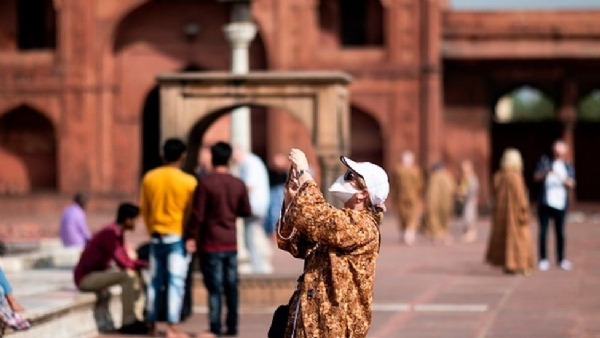
At its third session in Spain, held in September 1979, the UNWTO General Assembly decided to institute 'World Tourism Day', commencing in the year 1980. Besides, the timing of 'World Tourism Day' is believed to be particularly appropriate as it comes at the end of the high season in the northern hemisphere and the beginning of the season in the southern hemisphere.
The recent years are linked with huge loss due to the pandemic, particularly in the tourism sector. According to the UNWTO, World Tourism Day 2022 returns to focus on the future. As the sector’s recovery gets underway and building on unprecedented political and public recognition for the sector, UNWTO will highlight the opportunity to rethink how we do tourism. This means putting people and planet first and bringing everyone from governments and businesses to local communities together around a shared vision for a more sustainable, inclusive and resilient sector.
In India, the UNESCO has declared several historic sites as heritage sites that contribute considerably in India's tourism sector. However, there are also several such UNESCO sites that have gone unnoticed. Here are five such sites that you might want to visit soon;
1. Sundarbans National Park

The coming few years might be your golden opportunity to visit this place, as the Sundarbans National Park might surrender to environmental degradation and the mangroves might be destroyed forever, if the necessary actions are not taken. The UNESCO World Heritage Site of Sundarbans National Park, that was declared a UNESCO Site in 1987, stretches from River Hooghly in India's West Bengal, all the way to River Baleswar in Bangladesh. The special attraction of the National Park is that it is home to the Bengal Tiger.
Besides, a variety of birds, from brahminy kite to whistling teals, call the national park their home. The name 'Sundarbans' signifies 'beautiful forests' in the local language and the presence of the Sundari trees, which are dominant in this mangrove area are the main reason for the forest to be called so. The uniqueness of the Sundari trees lies in their roots which shoot upwards for respiration, particularly during waterlogging during monsoons. Their depletion is going to be huge threat for survival in the reason, that will result in massive flooding.
2. Mahabodhi Temple Complex, Bodh Gaya
The Mahabodhi Temple is special as it is one of the few surviving examples of early brick structures in India, which is why it has also had significant influence in the development of architecture in India and surrounding regions over the centuries. The present temple is one of the earliest and most imposing structures built entirely from brick in the late Gupta period.
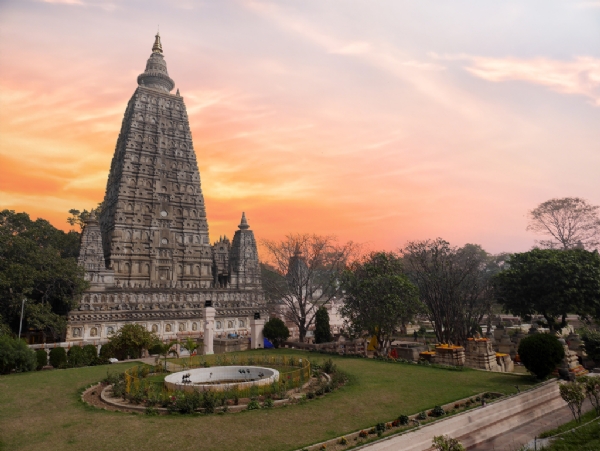
The Temple Complex has direct associations with the life of the Lord Buddha (566-486 BC) as the place where in 531 BC he attained the supreme and perfect insight while seated under the Bodhi Tree. It provides exceptional records for the events associated with his life and for subsequent worship, particularly since Emperor Asoka made a pilgrimage to this spot around 260 BC and built the first temple at the site of the Bodhi Tree.
As Indians, it is important to understand the culture and the roots we belong to. The Mahabodhi Temple Complex stands witness to the rule of earliest dynasty that ruled for largest continuous landmass of the country; the Mauryas, the dynasty whose rule is marked as the golden period of the Ancient India; the Guptas and the common link between all the dynasties that followed, the insights into the spiritual life of Gautama Buddha. There cannot be a better reason to visit the place than so many that already hint you an invitation.
3. River Island of Majuli
The island of Majuli is located in the North-Eastern state of Assam, amidst the mighty Brahmaputra. The Majuli Island is a fluvial landform; a riverine delta, a unique geographical occurrence and a result of the dynamics of this vast river system. Another significant feature of this system is the formation of beautiful islets locally called the Chaporis around the Majuli Island, which is resultant of the braiding of the river.
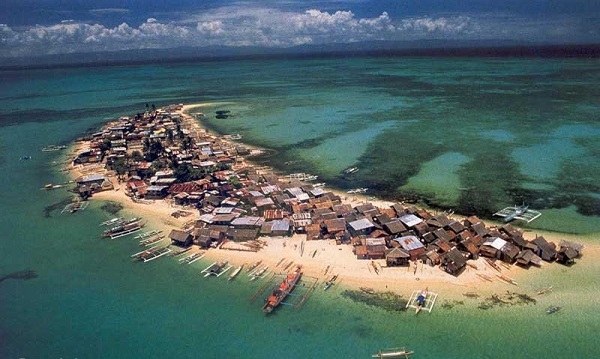
The banks of the island as well as the North and the South banks of the river Brahmaputra have the wetland a characteristic feature of the hydrology of the system. These are locally known as the Beefs. They are the abodes of rich flora and fauna unique to this region, unique for the breeding ground. The unique eco system that exhibits beautiful features, makes the place worth a visit.
4. Champaner Pavagadh Archaeological Park
Champaner and Pavagadh are often clubbed together as one of the most engaging historical attractions of Gujarat. Pavagadh stands on top of the hill that looks over the sprawl of monuments at the base in Champaner. The duo makes a rich heritage site dotted with forts, mosques, monuments, tombs, arches, temples, step-wells and fortresses from 8th to 14th century.
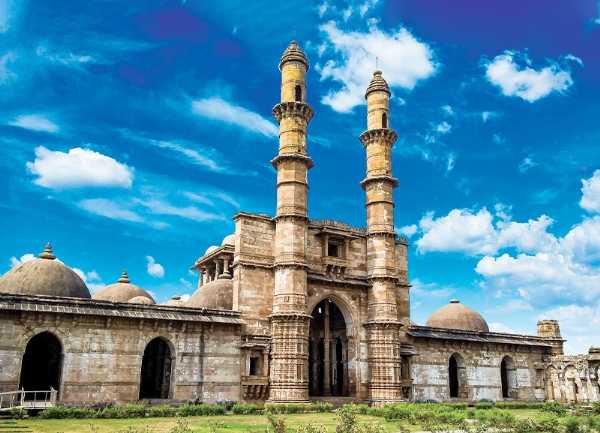
Pavagadh became the capital of the Chauhan Rajputs around 1300, but in 1484 was taken by the Gujarat Sultan Mahmud Begada, after a 20-month siege; the Rajputs committed jauhar (ritual mass suicide) in the face of defeat. Following his capture of Pavagadh, Sultan Mahmud Begada turned Champaner, at the base of the hill, into a splendid new capital. But its glory was brief: when it was captured by Mughal emperor Humayun in 1535, the Gujarati capital reverted to Ahmedabad, and Champaner fell into ruin.
During the times of Navratri, throngs of pilgrims ascend Pavagadh to worship at the important Kalikamata Temple, dedicated to the goddess Kali. Champaner is the only unchanged Islamic-Mughal city over the centuries, offering an authentic flavour of architecture of the era, which is why Architecture students and admirers often prioritize visiting the place.
5. Harrapan sites of Dholavira and Lothal
The ancient city of Dholavira, the southern centre of the Harappan Civilization, is sited in the State of Gujarat. Occupied between 3000-1500 BCE, the archaeological site, is one of the best preserved urban settlements from the period in Southeast Asia. It comprises a fortified city and a cemetery.
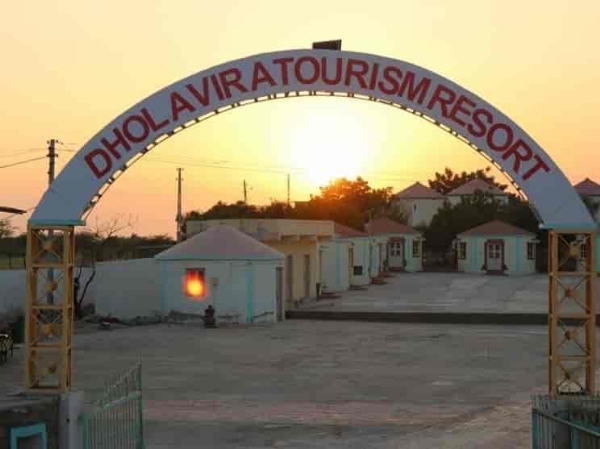
What attracts visitors to the site is that remains of a sophisticated water management system demonstrating the ingenuity of the Dholavira people in their struggle to survive and thrive in a harsh environment are visible at the site even today.
The archaeological remains of the Harappa port-town of Lothal is located along the Bhogava river, a tributary of Sabarmati, in the Gulf of Khambat. Measuring about 7 HA, Lothals thick (12-21 meter) peripheral walls were designed to withstand the repeated tidal flood, which probably resulted in the bringing the city to an end.
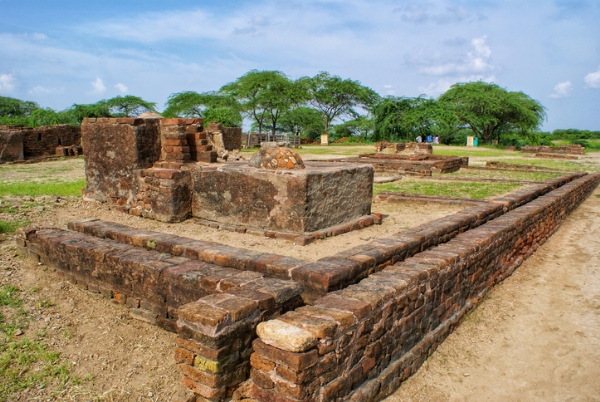
Visiting these Harappan sites, indulge the tourists in experiencing the technological advancement of our ow ancestors, that lost and rediscovered in the later period.
--


